An innovative fractional-order evolutionary game theoretical study of personal protection, quarantine, and isolation policies for combating epidemic diseases
- PMID: 38914575
- PMCID: PMC11637059
- DOI: 10.1038/s41598-024-61211-2
An innovative fractional-order evolutionary game theoretical study of personal protection, quarantine, and isolation policies for combating epidemic diseases
Abstract
This study uses imposed control techniques and vaccination game theory to study disease dynamics with transitory or diminishing immunity. Our model uses the ABC fractional-order derivative mechanism to show the effect of non-pharmaceutical interventions such as personal protection or awareness, quarantine, and isolation to simulate the essential control strategies against an infectious disease spread in an infinite and uniformly distributed population. A comprehensive evolutionary game theory study quantified the significant influence of people's vaccination choices, with government forces participating in vaccination programs to improve obligatory control measures to reduce epidemic spread. This model uses the intervention options described above as a control strategy to reduce disease prevalence in human societies. Again, our simulated results show that a combined control strategy works exquisitely when the disease spreads even faster. A sluggish dissemination rate slows an epidemic outbreak, but modest control techniques can reestablish a disease-free equilibrium. Preventive vaccination regulates the border between the three phases, while personal protection, quarantine, and isolation methods reduce disease transmission in existing places. Thus, successfully combining these three intervention measures reduces epidemic or pandemic size, as represented by line graphs and 3D surface diagrams. For the first time, we use a fractional-order derivate to display the phase-portrayed trajectory graph to show the model's dynamics if immunity wanes at a specific pace, considering various vaccination cost and effectiveness settings.
Keywords: Evolutionary game; Fractional-order; Non-pharmaceutical intervention; Protection.
© 2024. The Author(s).
Conflict of interest statement
The authors declare no competing interests.
Figures


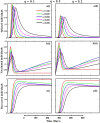
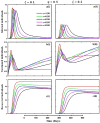
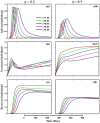
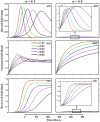



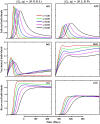

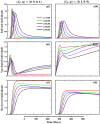
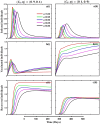



















Similar articles
-
Impact of self-imposed prevention measures and short-term government-imposed social distancing on mitigating and delaying a COVID-19 epidemic: A modelling study.PLoS Med. 2020 Jul 21;17(7):e1003166. doi: 10.1371/journal.pmed.1003166. eCollection 2020 Jul. PLoS Med. 2020. PMID: 32692736 Free PMC article.
-
Behavioral game of quarantine during the monkeypox epidemic: Analysis of deterministic and fractional order approach.Heliyon. 2024 Mar 3;10(5):e26998. doi: 10.1016/j.heliyon.2024.e26998. eCollection 2024 Mar 15. Heliyon. 2024. PMID: 38495200 Free PMC article.
-
Travel-related control measures to contain the COVID-19 pandemic: a rapid review.Cochrane Database Syst Rev. 2020 Oct 5;10:CD013717. doi: 10.1002/14651858.CD013717. Cochrane Database Syst Rev. 2020. Update in: Cochrane Database Syst Rev. 2021 Mar 25;3:CD013717. doi: 10.1002/14651858.CD013717.pub2. PMID: 33502002 Updated.
-
The mathematics of multiple lockdowns.Sci Rep. 2021 Apr 13;11(1):8078. doi: 10.1038/s41598-021-87556-6. Sci Rep. 2021. PMID: 33850217 Free PMC article.
-
International travel-related control measures to contain the COVID-19 pandemic: a rapid review.Cochrane Database Syst Rev. 2021 Mar 25;3(3):CD013717. doi: 10.1002/14651858.CD013717.pub2. Cochrane Database Syst Rev. 2021. PMID: 33763851 Free PMC article.
Cited by
-
Modeling and analysis of dengue transmission in fuzzy-fractional framework: a hybrid residual power series approach.Sci Rep. 2024 Dec 28;14(1):30706. doi: 10.1038/s41598-024-79475-z. Sci Rep. 2024. PMID: 39730443 Free PMC article.
References
-
- Ullah, M. S., Higazy, M. & Kabir, K. A. Dynamic analysis of mean-field and fractional-order epidemic vaccination strategies by evolutionary game approach. Chaos Solitons Fractals162, 112431. 10.1016/j.chaos.2022.112431 (2022).
-
- Khan, M. A., Meetei, M. Z., Shah, K., Abdeljawad, T. & Alshahrani, M. Y. Modeling the monkeypox infection using the Mittag–Leffler kernel. Open Phys.10.1515/phys-2023-0111 (2023).
MeSH terms
LinkOut - more resources
Full Text Sources

